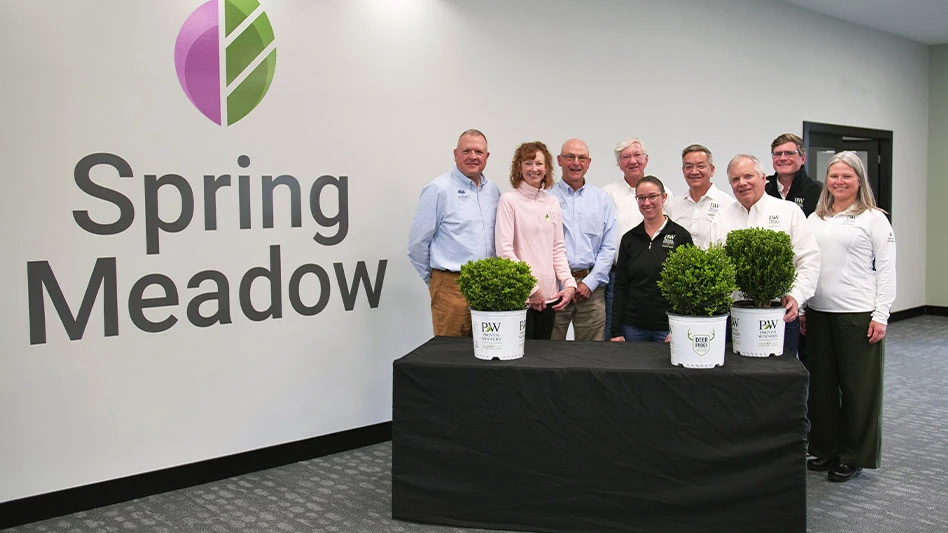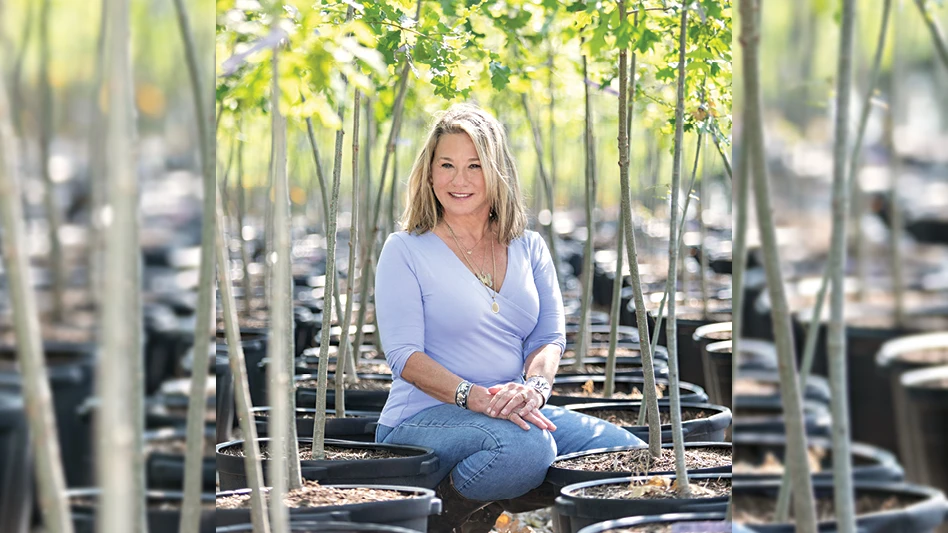
 If you could get inside the minds of consumers, you could sell more plants. Get their loyalty and their repeat purchases of plants and services.
If you could get inside the minds of consumers, you could sell more plants. Get their loyalty and their repeat purchases of plants and services.
In a first-ever $35,000 market research project, the Connecticut Nursery and Landscape Association has succeeded in probing a scientific sample of Connecticut residents for their attitudes toward you and your plants. What we discovered could change the way nurseries, greenhouses, garden centers and landscapers do their business — how you create marketing campaigns, what plants to sell and even when to sell them.
This industry has spent the past 100 years growing and selling plants in the hopes they were giving customers what they really want, but never really knowing for sure. We’ve been going on what sold in the past, not what consumers would like to see in the future. We’ve been running our businesses on what our gut tells us.
Under the microscope
Our green industry has done almost no research into consumer attitudes — unlike McDonald’s or Coca-Cola or Procter & Gamble, companies that never roll out a new product without first delving into customer thoughts and reactions. CNLA’s focus groups are exactly like those done for Fortune 500 companies every day.
|
Consumers care about locally grown plants For the most part, consumers place higher priority on buying locally grown plants. When we asked them whether Connecticut Grown really matters, here’s what they said:
|
The beauty of these focus groups is twofold: First, we can pinpoint a cross-section of Connecticut consumers in just 60 people selected for their income, age, education, home ownership and gender. A steering committee from CNLA?and the Connecticut Greenhouse Growers Association set the parameters. Second, when these people are put into a room with a professional moderator, they open up and give honest feelings that they might never otherwise have the nerve to tell their local garden center or plant pro.
Ignore this valuable information at your own peril. These are the results of our December focus groups. Another focus group was conducted in June and results will be released this year.
Why Connecticut consumers garden
Your most effective marketing would not be about the plants, but instead about what the plants do for the customer. You should always promote the end result, like Carnival Cruises plays up the fun of a cruise, not the tonnage of the ship or its rooms.
We asked these Connecticut residents why they like or dislike gardening. The good news is they love plants and gardening for reasons you may have never thought of before. Below are their motives and personal rewards for gardening. Consider this: each one of these alone could become a marketing campaign for you.
- Gardening gives me a sense of accomplishment.
- Pride in my property.
- Has sentimental meaning for me — it’s part of my family heritage.
- I started gardening as a kid and can’t stop.
- There’s no life without green or flowers. I talk to my plants all the time.
- I garden for the relaxation, exercise and fresh air.
- Gardens provide cut flowers for the house.
- It’s a teaching experience for my kids. They help me with the gardens.
- Sense of renewal, rebirth and a new beginning comes from my gardens each season.
- They’re welcoming to my visitors.
- Increases the resale value of my property.
- My emotional commitment to my plants. Had a dream we were moving, so I dug them all up and took them with me.
- Gardens enhance my view.
- Love the fragrance.
- Herbs for cooking.
- Makes me feel closer to God and nature.
- My spouse and I develop a closer relationship when we garden together.
- Plants give us privacy.
- The garden provides an escape, takes you into another world.
- Gardening makes our house a home, something growing alongside our family.
- Love the challenge of propagating them.
- Love going shopping for the plants at the different stores.
- Enjoy creating new life.
- It’s a splurge thing, I do it for me.
- Love the compliments I get on my gardens.
- Attracts wildlife, butterflies, bees.
- Prevents erosion.
- Source of constant color, even in the winter.
- Curb appeal.
- Plants are therapeutic, even meditative. My mind is alone with them. Brightens dreary days.
- Gardens reflect the kind of people who live there, reflects our own style.
 Notice that not once did a single person mention a specific plant.
Notice that not once did a single person mention a specific plant.
For growers, plant retailers and installers, it’s all about the plants. For your customers, it’s about something totally different — how plants enhance their lives.
When you create marketing programs that focus solely on your plants, you’re giving customers what you want them to hear, not how the plants benefit them.
What holds them back from buying plants
We wanted to know the reasons why Connecticut consumers avoid buying plants.
The clever garden center, nursery or greenhouse can develop ideas to overcome most of these road blocks.
- Drudgery of watering plants.
- Anxiety over picking the right plant.
- The obligation and responsibility of buying a plant: “It’s a commitment!”
- Keeping up with the Joneses; resent that they have to stay current with the neighborhood.
- Worries about getting Lyme disease.
- The high cost of plants.
- My lack of knowledge.
- No room or space.
- Seeing the same plant all over. “Impatiens — they’re so everywhere,” said “Kathleen.”
- So afraid of killing them.
- Eaten by deer, pests.
|
Give consumers plants in the fall In these focus groups, we wanted to know about expanding the plant-selling season beyond the spring. We discovered most customers do not know that fall is a good time to plant perennials, trees and shrubs. When they’re told how the longer cool months enable plant root systems to better establish themselves in moist soils, then pop out beautifully in the spring, consumers are amazed. “You have to get that message out there,” said “Sheri.” “Nobody knows that.” Instead, here’s what consumers see at garden centers in the fall:
Consumers admit they also feel a psychological pull-back in the fall months. “The days are shorter, so you have less time to spend out there,” said one Norwalk panelist. But their minds could be changed into buying more plants in the fall. That’s a big opportunity for our green industry. |
Plant guarantees rank high with Connecticut consumers. If a plant fails, they are impressed when a retailer offers to replace it.
Except for annuals, most customers have the expectation that plants should live for decades after planting in the garden.
Independents vs. mass markets
Generally, consumers tell CNLA they are making about half their plant purchases at big box stores — Home Depot, Lowe’s, supermarkets, Walmart, etc. But their reasoning may both confirm your expectations and surprise you at the same time.
Amazingly, many of the plant buyers CNLA probed know which day plant shipments arrive at Home Depot, so they get plants fresh from the nursery or greenhouse.
“The stock at Home Depot always looks washed out,” said “Tom” from southern Fairfield County. “You have to hit them at the right time.”
“Sheri” observed, “They don’t have service at Home Depot, they have prices.”
Tom added, “If I want something specific, I can’t get that at Home Depot.”
“If I’m not knowledgeable, I’ll go to a local nursery,” Sheri added.
A participant in the Danbury group made an interesting observation. “You see Home Depot gardens all over the place.” The more that people buy the same plants repeatedly from a mass market, the more their yards look alike.
Tom told a story of how he once went to a garden center intent on buying hydrangeas for his driveway area, but they talked him into blueberry bushes instead, which worked much better.
“If somebody spends time advising me, I’ll lay out more money,” offered “Kathleen.”
The sessions revealed that some consumers split up their plant buying, for example annuals at chains, but trees and shrubs from the local garden center. The people in our groups were hesitant to buy plants online. “When I plant it, I want to see it,” said “Bud.”
Patricia Sabena, the market researcher, boiled it all down to this: Connecticut consumers look at the big chain stores and see the following advantages in buying plants there:
- Lower prices.
- Decent selection, good quantity.
- Refund/replacement guarantee.
- Accessible, convenient hours.
- Good plant marketing flyers.
The disadvantages in buying plants from the chain stores, our state consumers believe, are:
- Not top quality, ‘push low-end stuff.’
- Limited variety, generic plants.
- More risk, plants not cared for there.
- Less educated help, even teenagers.
- Have to get them when truck comes.
Local, independent garden centers provide “a better atmosphere,” said “Jen.” “It’s inspirational, like a gardening culture.”
 Connecticut consumers count more advantages to buying plants from independents:
Connecticut consumers count more advantages to buying plants from independents:
- Better/best quality plants.
- Unique, exotic plants.
- Better perennials, shrubs, trees.
- Great displays/ideas.
- Helpful, personal attention.
- Educated, expertise, pride.
- Feels good supporting local business.
- Warranty/replacement guarantees are important from the garden center.
- Ability to diagnose plant problems on-the-spot.
“Bob” observed that the independently owned garden center “takes more pride in their products, like they’re selling a piece of themselves.”
Among the few disadvantages of the local store — but they’re powerful ones:
- More expensive over all.
- Inconvenient hours.
The green industry company that truly listens to these findings, and embraces them in its daily business practice, will be more successful in targeting its products, services and marketing to increase sales and profits.
Bob Heffernan is the executive secretary of the CNLA. The first half of this research was done last December, when Sabena Qualitative Research recruited four groups of specially-selected citizens in western Connecticut. The second half was finished the first week of June, with more sessions in the New Haven and greater Hartford areas. Funding for the project came from a specialty crop grant of USDA and the Connecticut Department of Agriculture. For more information on these focus groups, visit www.flowersplantsinct.com.

Explore the August 2012 Issue
Check out more from this issue and find your next story to read.
Latest from Nursery Management
- The HC Companies, Classic Home & Garden merge as Growscape
- Eason Horticultural Resources will now officially be known as EHR
- BioWorks receives EPA approval for new biological insecticide for thrips, aphids, whiteflies
- Ellen Mackenbach-Lakeman appointed new CEO of Dümmen Orange
- Southern Garden Tour sets 2025 dates for trial garden open houses
- New book explores plants that thrive in Rocky Mountains
- American Floral Endowment establishes Herman Meinders Memorial Tribute
- These companies are utilizing plastic alternatives to reduce horticultural waste





